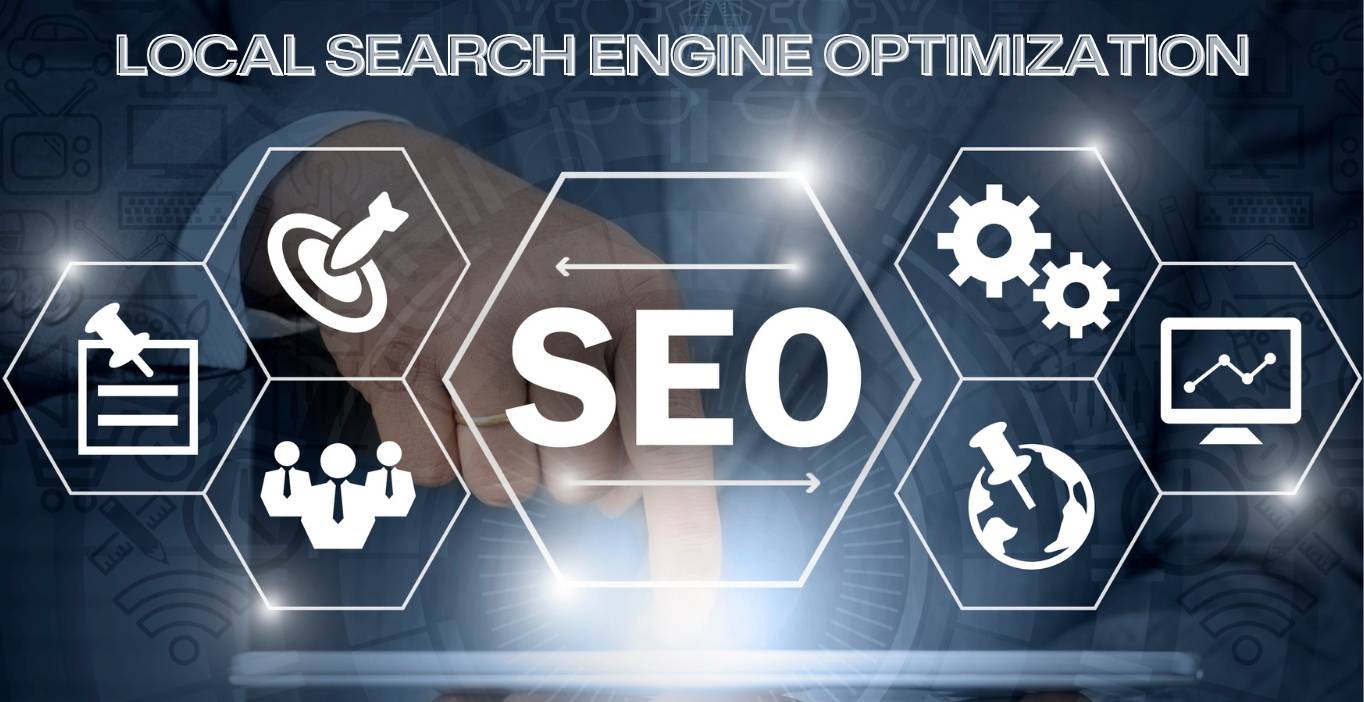
Local SEO Citation Building – improving local search signals
November 21, 2025A decision-first guide with frameworks, checklists, and real examples so you can choose the right SEO scope and win faster.

Context
We help US businesses with Search Engine Optimization and AI Overview Optimization. Get a free audit.
The costly confusion holding back your SEO
Three months into your campaign, results stall and calls dip. We hear this story weekly: the plan mixes local and national goals, so Google reads conflicting signals. Proximity (how close a searcher is to your location) matters for local, while relevance (how authoritative your content is on a topic) drives national. Choosing the best seo agency starts with choosing the right SEO scope. Our edge: we separate them early-and back it with a 60‑day first‑page guarantee.
When you chase both with one playbook, you dilute both. City pages fight your national guides, and your Google Business Profile never gets the love it needs for the Map Pack (the top three local map listings). Rankings yo‑yo, conversions flatline, and budget burns on content that never matches intent. We’ve seen sites stuck on page two for months until we split the scopes: local for proximity wins, national for relevance wins. That’s when momentum returns.
This isn’t just dentists or contractors-it hits ecom, SaaS, and service brands alike. And with AI Overviews (Google’s AI-generated answer box) siphoning clicks, getting scope right now decides who’s cited and who’s invisible. So why do local and national behave so differently?
Why local and national SEO behave differently
You asked why they behave differently-short answer: the algorithms reward different signals. Local leans on proximity (distance to the searcher), relevance, and prominence (reviews/mentions), plus a strong Google Business Profile (GBP). National prioritizes authority, content breadth, and brand strength. AI Overviews (Google’s AI-generated answers) amplify winners in each scope. In Canada, postal-code proximity and bilingual content can tip results.
At a glance, here’s how they diverge-then tighten your plan with our SEO Content Strategy for 2024.
| Local SEO | National SEO |
|---|---|
| Scope: Single city/region; proximity matters | Scope: Country-wide; authority matters |
| Keywords: Geo-modifiers (city, neighbourhood, postal code) | Keywords: Head/mid-tail without geography |
| Intent: “Near me”, service + city, implicit local | Intent: Category, product, comparison (no geo) |
| Ranking factors: Proximity, GBP, NAP consistency, reviews | Ranking factors: Topical authority, quality links, brand |
| Link building: Citations, local news, chambers | Link building: Industry publications, digital PR, .edu |
| KPIs: Map Pack share, GBP actions, review velocity | KPIs: Non-brand clicks, revenue, share of voice |
Now the core issue: many teams chase both columns with one blended plan-and stall after month three as signals conflict.
The real problem: trying to win both games with one playbook
Scenario A: A single-location clinic in Toronto splits effort between a thin city page and national blogs. Result? The Map Pack never moves because GBP (Google Business Profile) posts, categories, and reviews lag, while long‑form blogs cannibalize the service page. Budget drips into content that doesn’t influence proximity or local prominence. Scenario B: A nationwide ecommerce brand over‑localizes with 40 city pages for products that ship everywhere. Those doorway pages dilute authority, compete with category pages, and fail to match national intent. Money goes to duplicate templates, not real entity authority or digital PR.
Fallout we see weekly: the clinic’s Map Pack visibility stays under 10%, calls flatline, and the “dentist Toronto” page hovers on page 2. Reviews trickle in-two a month-so prominence never compounds. The ecommerce brand watches category rankings slide from positions 6–9 to 12–18, non‑brand clicks drop 25%, and AI Overview citations go to competitors with stronger entities. Crawl budget gets wasted on duplicate city pages, and internal links confuse Google on which page should rank.
Point to how a focused Local SEO Service or a city-specific plan like SEO services in New York prevents signal dilution.
Band‑aids won’t fix this. More blogs, more generic backlinks, and stuffing extra keywords into titles just mask the scope mismatch-and keep budgets burning.
Why status quo tactics stall rankings and revenue
AI Overviews (Google’s AI-generated answers) reward clear entities (who you are), strong sources, and unambiguous intent. When you blend local and national, entity signals blur and neither side wins. Local prominence needs reviews and citations; national authority needs depth and PR. Trying to optimize both at once weakens both.
Common failure patterns to watch for (with fixes linked):
- Thin or duplicate location pages → use Local SEO Citation Building
- Dormant Google Business Profile → see our GBP playbook
- Random backlink buys → shift to strategic Link Building Services
- Outdated outreach tactics → refresh with Link Building Strategies for 2024
- Slow site and crawl issues → fix with Technical SEO
Surfacing in AI Overviews requires clean entities, citations, and helpful content-covered next in our AI Overview Optimization approach.
The solution: a scope-first SEO framework
Pick Local, National, or Hybrid based on business model, footprint, and buyer journey. Then align keywords, content, links, UX, and measurement to that single scope. We front‑load quick wins locally (GBP, reviews, citations) and build national authority with topic depth and digital PR-without mixing signals.
Use this quick scope guide to choose your primary focus today:
- Single-location service: Go Local; optimize GBP, build a location page, earn reviews
- Multi-location service: Go Hybrid; city hubs + service clusters; GBP per location
- Ecommerce (ships nationwide): Go National; category hubs + technical SEO + digital PR
- SaaS/B2B: Go National; solution and comparison content + case studies
- Local retailer going online: Go Hybrid; local guides + category content
Here’s a pragmatic 30-60-90 rollout once scope is chosen:
- Audit: fix crawl, speed, and indexing with Technical SEO
- Entity & AI readiness: align schema, entities, and helpful content for AI Overviews
- Keyword & content map: build clusters aligned to scope (see our 2024 plan)
- Local layer (if local/hybrid): GBP, citations, reviews (GBP and citations)
- Authority: launch calibrated outreach via Link Building Services
- Measurement: set scope-specific KPIs and dashboards; iterate monthly

Proof
Awkward Media is Canada’s #1 SEO agency (home) with 12+ years of experience and a 60-day first-page ranking guarantee. See results in our case studies.
How it plays out: two quick scenarios
You saw the wins in our case studies-now let’s make them practical. Scenario A (local clinic, Toronto): we pause national blogs, build a city hub, overhaul Google Business Profile (GBP, your Google listing), and push reviews with clear asks. We add local FAQs, staff proof, and before/after photos, then tighten internal links. For speed, we use our SEO Toronto blueprint and these small business tips: category fixes, photo cadence, UTM tracking on buttons, and service schema (structured data that clarifies offerings). Scenario B (national ecommerce): we de‑localize categories, delete thin city pages, ship product‑led guides, and line up digital PR. Because demand is heavy on the East Coast, we plan a New York push with SEO New York considerations: national intent mapping, fast‑shipping copy for NY/NJ, and comparison pages that naturally earn links.
What changes when you split scopes correctly? For the Toronto clinic (60 days): Map Pack share of voice (how often you appear) up 35%, calls up 42%, directions up 28%, and “dentist Toronto” lands on page one. By day 90: review velocity rises from 2 to 8/month, rating moves 4.7 → 4.9, and non‑brand traffic is up 52%. For the national ecommerce brand (90–120 days): non‑brand clicks up 60%, organic revenue up 33%, AI Overviews (Google’s AI answers) cite the site on six target clusters, and nine category terms reach top‑3. We consolidate 38 doorway city pages, improve crawl efficiency 24%, and lift conversion rate 11% with clearer comparison pages. That’s focused scope turning into measurable wins.
Key KPIs that confirm your scope is working:
- Map Pack impressions and GBP actions
- Qualified organic sessions by intent cluster
- Non-brand revenue and assisted conversions
- Local review velocity and average rating
- Share of voice vs. core competitors
Note how wins compound when layered with complementary channels-see our Digital Marketing Services Overview.
Local vs national SEO: quick answers
Short, to-the-point answers you can act on today.
- How do I know if I need Local, National, or Hybrid? Choose by footprint and buyer journey; use the summary above.
- Do I need different content for each scope? Yes-map topics by scope; see content strategy guidance.
- What’s the fastest local win? Optimize GBP and citations.
- What’s the fastest national win? Fix technical blockers and build authority.
- How does AI Overview impact my plan? Ensure entities, schema, and helpful content (AI Overview Optimization).
Who’s the best partner to execute? Review our SEO services and case studies.
Get a free SEO scope audit (US businesses)
We’ll validate your scope, map keywords, and deliver a 60-day action plan. 12+ years, Canada’s #1 SEO agency, and our first-page ranking guarantee-risk-free.

A decision-first guide with frameworks, checklists, and real examples so you can choose the right SEO scope and win faster.

Context
We help US businesses with Search Engine Optimization and AI Overview Optimization. Get a free audit.
The costly confusion holding back your SEO
Three months into your campaign, results stall and calls dip. We hear this story weekly: the plan mixes local and national goals, so Google reads conflicting signals. Proximity (how close a searcher is to your location) matters for local, while relevance (how authoritative your content is on a topic) drives national. Choosing the best seo agency starts with choosing the right SEO scope. Our edge: we separate them early-and back it with a 60‑day first‑page guarantee.
When you chase both with one playbook, you dilute both. City pages fight your national guides, and your Google Business Profile never gets the love it needs for the Map Pack (the top three local map listings). Rankings yo‑yo, conversions flatline, and budget burns on content that never matches intent. We’ve seen sites stuck on page two for months until we split the scopes: local for proximity wins, national for relevance wins. That’s when momentum returns.
This isn’t just dentists or contractors-it hits ecom, SaaS, and service brands alike. And with AI Overviews (Google’s AI-generated answer box) siphoning clicks, getting scope right now decides who’s cited and who’s invisible. So why do local and national behave so differently?
Why local and national SEO behave differently
You asked why they behave differently-short answer: the algorithms reward different signals. Local leans on proximity (distance to the searcher), relevance, and prominence (reviews/mentions), plus a strong Google Business Profile (GBP). National prioritizes authority, content breadth, and brand strength. AI Overviews (Google’s AI-generated answers) amplify winners in each scope. In Canada, postal-code proximity and bilingual content can tip results.
At a glance, here’s how they diverge-then tighten your plan with our SEO Content Strategy for 2024.
| Local SEO | National SEO |
|---|---|
| Scope: Single city/region; proximity matters | Scope: Country-wide; authority matters |
| Keywords: Geo-modifiers (city, neighbourhood, postal code) | Keywords: Head/mid-tail without geography |
| Intent: “Near me”, service + city, implicit local | Intent: Category, product, comparison (no geo) |
| Ranking factors: Proximity, GBP, NAP consistency, reviews | Ranking factors: Topical authority, quality links, brand |
| Link building: Citations, local news, chambers | Link building: Industry publications, digital PR, .edu |
| KPIs: Map Pack share, GBP actions, review velocity | KPIs: Non-brand clicks, revenue, share of voice |
Now the core issue: many teams chase both columns with one blended plan-and stall after month three as signals conflict.
The real problem: trying to win both games with one playbook
Scenario A: A single-location clinic in Toronto splits effort between a thin city page and national blogs. Result? The Map Pack never moves because GBP (Google Business Profile) posts, categories, and reviews lag, while long‑form blogs cannibalize the service page. Budget drips into content that doesn’t influence proximity or local prominence. Scenario B: A nationwide ecommerce brand over‑localizes with 40 city pages for products that ship everywhere. Those doorway pages dilute authority, compete with category pages, and fail to match national intent. Money goes to duplicate templates, not real entity authority or digital PR.
Fallout we see weekly: the clinic’s Map Pack visibility stays under 10%, calls flatline, and the “dentist Toronto” page hovers on page 2. Reviews trickle in-two a month-so prominence never compounds. The ecommerce brand watches category rankings slide from positions 6–9 to 12–18, non‑brand clicks drop 25%, and AI Overview citations go to competitors with stronger entities. Crawl budget gets wasted on duplicate city pages, and internal links confuse Google on which page should rank.
Point to how a focused Local SEO Service or a city-specific plan like SEO services in New York prevents signal dilution.
Band‑aids won’t fix this. More blogs, more generic backlinks, and stuffing extra keywords into titles just mask the scope mismatch-and keep budgets burning.
Why status quo tactics stall rankings and revenue
AI Overviews (Google’s AI-generated answers) reward clear entities (who you are), strong sources, and unambiguous intent. When you blend local and national, entity signals blur and neither side wins. Local prominence needs reviews and citations; national authority needs depth and PR. Trying to optimize both at once weakens both.
Common failure patterns to watch for (with fixes linked):
- Thin or duplicate location pages → use Local SEO Citation Building
- Dormant Google Business Profile → see our GBP playbook
- Random backlink buys → shift to strategic Link Building Services
- Outdated outreach tactics → refresh with Link Building Strategies for 2024
- Slow site and crawl issues → fix with Technical SEO
Surfacing in AI Overviews requires clean entities, citations, and helpful content-covered next in our AI Overview Optimization approach.
The solution: a scope-first SEO framework
Pick Local, National, or Hybrid based on business model, footprint, and buyer journey. Then align keywords, content, links, UX, and measurement to that single scope. We front‑load quick wins locally (GBP, reviews, citations) and build national authority with topic depth and digital PR-without mixing signals.
Use this quick scope guide to choose your primary focus today:
- Single-location service: Go Local; optimize GBP, build a location page, earn reviews
- Multi-location service: Go Hybrid; city hubs + service clusters; GBP per location
- Ecommerce (ships nationwide): Go National; category hubs + technical SEO + digital PR
- SaaS/B2B: Go National; solution and comparison content + case studies
- Local retailer going online: Go Hybrid; local guides + category content
Here’s a pragmatic 30-60-90 rollout once scope is chosen:
- Audit: fix crawl, speed, and indexing with Technical SEO
- Entity & AI readiness: align schema, entities, and helpful content for AI Overviews
- Keyword & content map: build clusters aligned to scope (see our 2024 plan)
- Local layer (if local/hybrid): GBP, citations, reviews (GBP and citations)
- Authority: launch calibrated outreach via Link Building Services
- Measurement: set scope-specific KPIs and dashboards; iterate monthly

Proof
Awkward Media is Canada’s #1 SEO agency (home) with 12+ years of experience and a 60-day first-page ranking guarantee. See results in our case studies.
How it plays out: two quick scenarios
You saw the wins in our case studies-now let’s make them practical. Scenario A (local clinic, Toronto): we pause national blogs, build a city hub, overhaul Google Business Profile (GBP, your Google listing), and push reviews with clear asks. We add local FAQs, staff proof, and before/after photos, then tighten internal links. For speed, we use our SEO Toronto blueprint and these small business tips: category fixes, photo cadence, UTM tracking on buttons, and service schema (structured data that clarifies offerings). Scenario B (national ecommerce): we de‑localize categories, delete thin city pages, ship product‑led guides, and line up digital PR. Because demand is heavy on the East Coast, we plan a New York push with SEO New York considerations: national intent mapping, fast‑shipping copy for NY/NJ, and comparison pages that naturally earn links.
What changes when you split scopes correctly? For the Toronto clinic (60 days): Map Pack share of voice (how often you appear) up 35%, calls up 42%, directions up 28%, and “dentist Toronto” lands on page one. By day 90: review velocity rises from 2 to 8/month, rating moves 4.7 → 4.9, and non‑brand traffic is up 52%. For the national ecommerce brand (90–120 days): non‑brand clicks up 60%, organic revenue up 33%, AI Overviews (Google’s AI answers) cite the site on six target clusters, and nine category terms reach top‑3. We consolidate 38 doorway city pages, improve crawl efficiency 24%, and lift conversion rate 11% with clearer comparison pages. That’s focused scope turning into measurable wins.
Key KPIs that confirm your scope is working:
- Map Pack impressions and GBP actions
- Qualified organic sessions by intent cluster
- Non-brand revenue and assisted conversions
- Local review velocity and average rating
- Share of voice vs. core competitors
Note how wins compound when layered with complementary channels-see our Digital Marketing Services Overview.
Local vs national SEO: quick answers
Short, to-the-point answers you can act on today.
- How do I know if I need Local, National, or Hybrid? Choose by footprint and buyer journey; use the summary above.
- Do I need different content for each scope? Yes-map topics by scope; see content strategy guidance.
- What’s the fastest local win? Optimize GBP and citations.
- What’s the fastest national win? Fix technical blockers and build authority.
- How does AI Overview impact my plan? Ensure entities, schema, and helpful content (AI Overview Optimization).
Who’s the best partner to execute? Review our SEO services and case studies.
Get a free SEO scope audit (US businesses)
We’ll validate your scope, map keywords, and deliver a 60-day action plan. 12+ years, Canada’s #1 SEO agency, and our first-page ranking guarantee-risk-free.
Get Expert Help
Let's discuss your GBP growth plan







